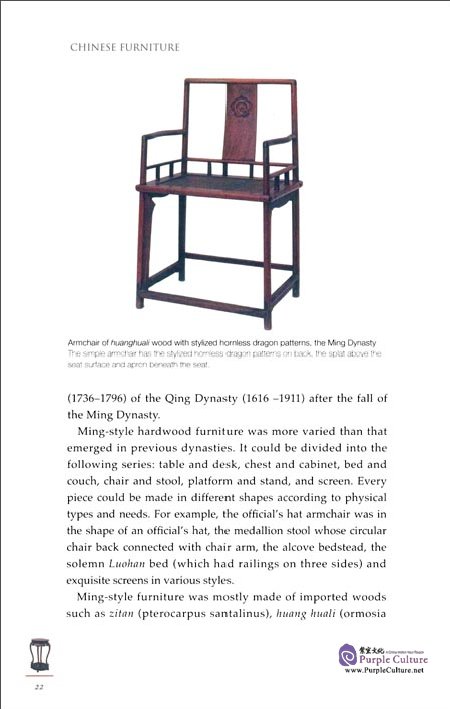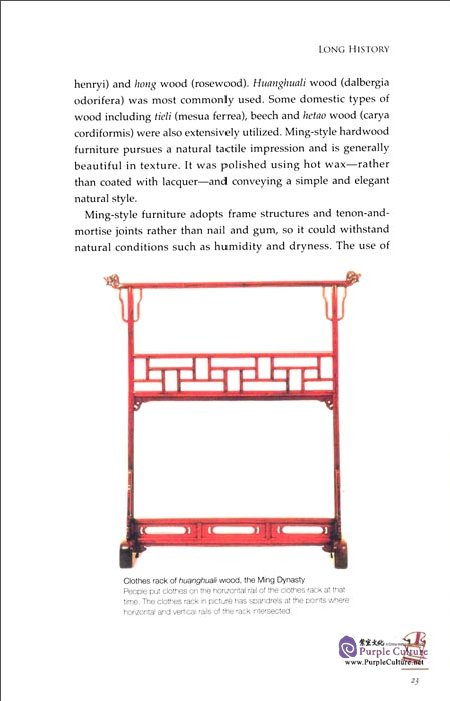Details
Chinese Furniture is aoutstanding representative of the Chinese arts.It has the bright feature of oriental arts and is honored as a pearl ioriental arts.As for the uniquefeature of Chinese furniture, some say it capletely give full play to the inbornature of wood and display the beauty of the texture of wood.Some say it has perfect artistic shape.Its lines are delicate,easy and smooth and its structure reasonable and elegant.Some say its producing technique is superb,tenoand mortise precise and decorations elegant.Some say it has long historical grace,elegant artistic style and colorful charm.
About Author
Zhang Xiaoming Born in Weifang, Shandong province in 1971, Zhang is now the associate professor of the Art School of Shandong University of Technology. In 2000, she gained Master's Degree of Literature from Beijing Normal University. In 2005, she won Doctor's Degree of Chinese Literature from Shandong University. She began to work at the mobile station for post-doctorial students at the History and Culture School of Shandong University in 2006. She is mainly engaged in the research of history and culture. She has published many essays on the national academic periodicals and one academic book.
Sample Pages Preview


For instance, the middle of the top rail of a chair is slightly protruding, downward on both sides, and slightly outstanding at the ends.From another direction, after the top rail passes through the column.it bends slightly towards the rear part and outside.In this way, a natural and fluent curve takes shape in a three—dimensional space.This shape is startling similar with the profile of a building roof.There are some decorations in the shape of heap of clouds, dragon heads, or animals at the ends of the top rail of shelf—type furniture, that are obviously similar to the decorations used on building ridges, with only different images adopted.What's more, these decorations and the shape of the top rail have no structural function.
The bracket is a weight—bearing piece at the intersection between a beam and a column in traditional Chinese buildings.It is used for fastening and load bearing.Various aprons used in Chinese furniture use types of brackets.An apron is located at the intersection between bail and standing wood at, for example,the angle of intersection between a table—top and the four legs,or between the hind legs and the back of a chair or between the hand rail and front leg of a chair.

